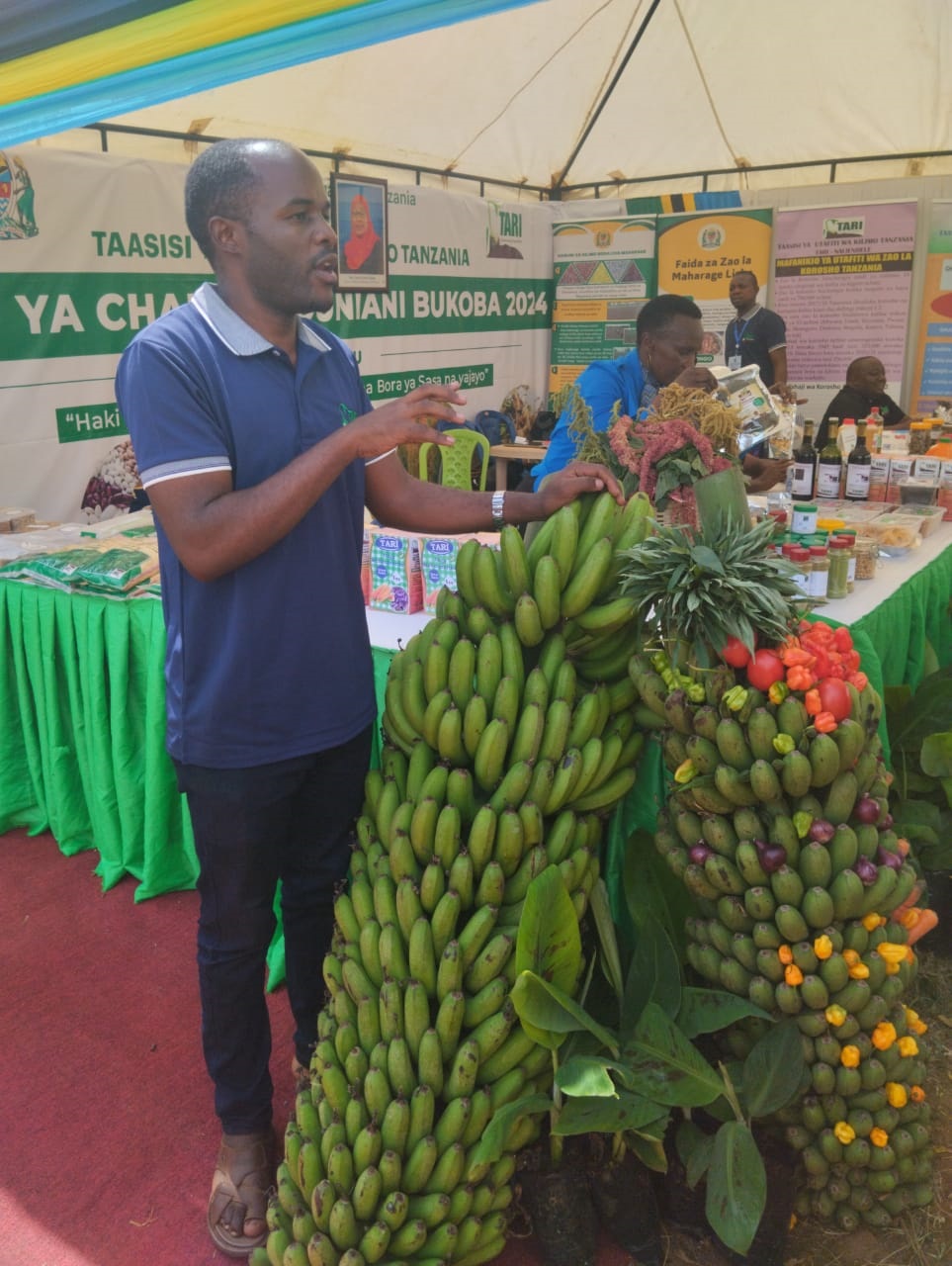A Banana Boon: TARI-Makuru’s Fight Against Pests and Diseases

KAGERA: BANANA, a staple crop and essential source of income for Tanzanian farmers, has been under siege by pests, diseases and low yields, threatening livelihoods across the country.
But at the TARI-Makuru research centre in Kagera, innovative solutions are taking root. With new disease-resistant banana varieties and sustainable farming practices, TARI-Makuru is transforming banana production and providing farmers with the tools to reclaim their crops and boost their incomes.
According to the centre’s manager, Dr Mpoki Shimwela, TARI-Makuru has been actively introducing drought and disease-resistant banana varieties, developed by the Fundación Hondureña de Investigación Agrícola (FHIA), to the Kagera Region.
Speaking at the recent World Food Day celebrations in Kagera, organised by the United Nations Food and Agriculture Organisation (FAO) and government partners, Dr Shimwela highlighted the advantages of these new varieties.
He said they offer increased yields, better disease and pest resistance and enhanced fruit quality, including improved taste and nutritional value.
“These new varieties can thrive without relying on chemical pesticides and are drought-tolerant, making them ideal for farmers in Kagera,” Dr Shimwela said.
Varieties like FHIA-23, known for its resistance to Black Sigatoka and other diseases and FHIA-17, which combines good yield potential with disease resistance, are already being evaluated across the region.
Battling longstanding challenges
“For years, banana farmers in Kagera have grappled with low yields and the devastating impact of pests and diseases,” Dr Shimwela explained. “While the potential yield per hectare is much higher, pests like weevils and nematodes, as well as diseases like bacterial wilt and Banana Bunchy Top Virus (BBTV), have limited productivity.”
According to him, in ideal conditions, banana farms in Tanzania could yield up to 70 tonnes per hectare, with each bunch weighing between 30 and 50 kilogrammes. Yet, many farmers achieve only a fraction of this potential, often as low as seven tonnes per hectare.
He said BBTV, one of the most destructive banana diseases worldwide, causes stunted growth and a distorted “bunched” appearance in the leaves.
This virus, along with bacterial and fusarium wilt, continues to pose serious threats to banana production.
Innovative solutions for higher yields
TARI-Makuru is tackling these challenges through a multi-pronged approach. The centre provides farmers and extension workers with training on disease control methods, focusing on bacterial wilt, a significant threat in the Lake Zone.
“We educate farmers on best practices for disease control,” Dr Shimwela noted. “For instance, we emphasise proper sanitation and pruning techniques. If farmers prune diseased leaves and then cut a healthy plant without disinfecting their tools, the disease can easily spread.”
The centre also promotes the use of certified, disease-free planting materials, ensuring that farmers start with clean, quality plants. “By encouraging the use of clean tools and quality planting materials, we’re helping prevent disease spread,” he added. Farmers are taught to sanitise tools with bleach or fire and to remove the male flower promptly to prevent bees from transmitting infection.
In addition to these practices, TARI-Makuru works closely with farmers to raise awareness of BBTV and its spread through infected planting materials and aphids.
“This virus is primarily spread through planting materials and aphids,” Dr Shimwela explained. “Educating farmers on proper handling and sourcing of materials is essential in controlling BBTV’s impact on the region.”





